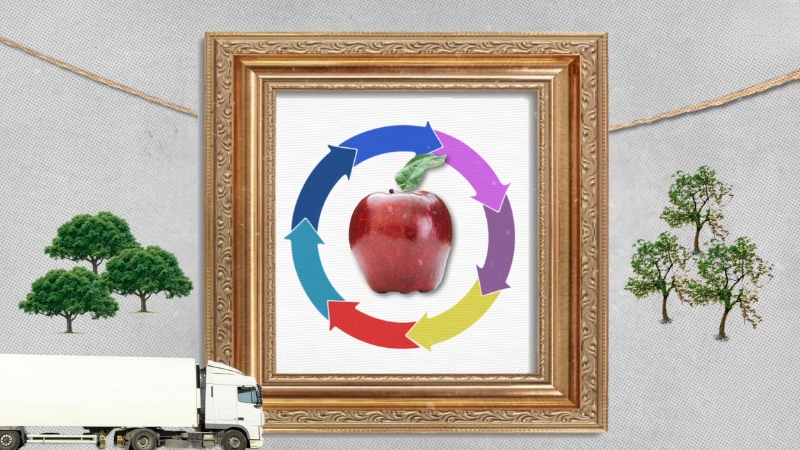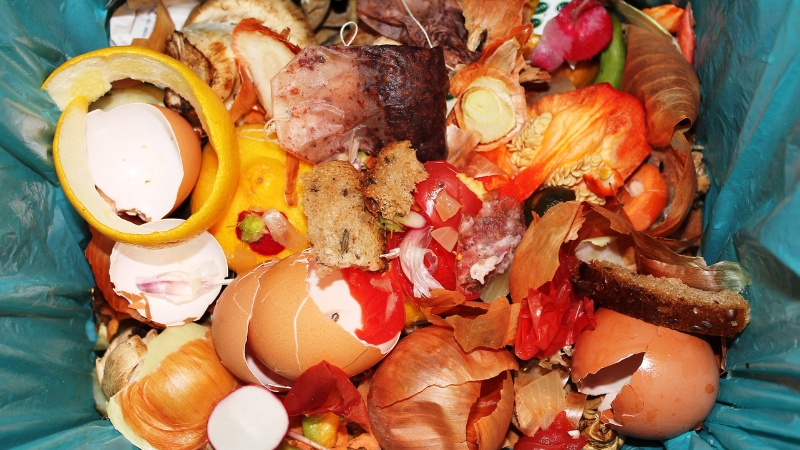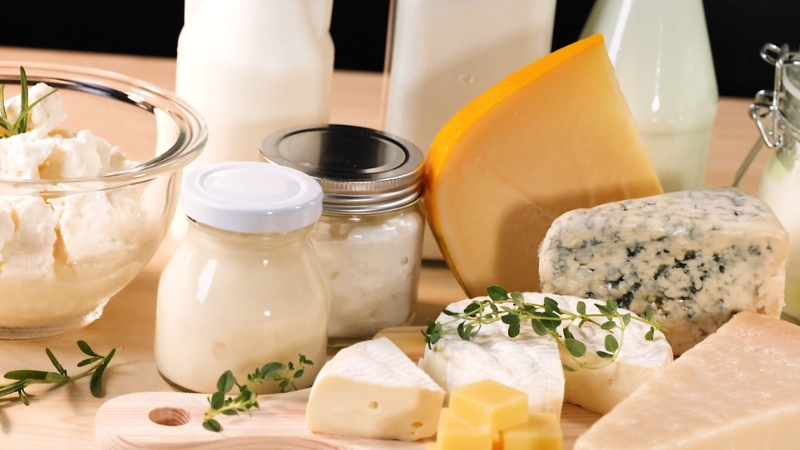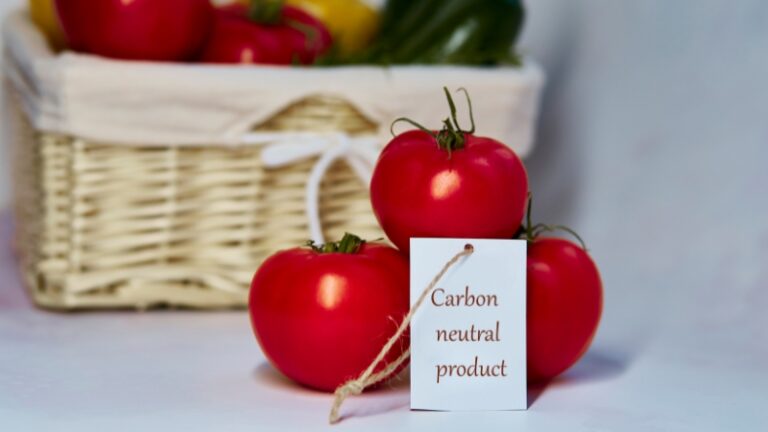The food choices you make every day have a direct impact on the planet’s carbon footprint, often more than you think. Foods like beef and lamb are among the highest carbon emitters, while plant-based staples such as beans, grains, and vegetables are among the lowest.
If you want to reduce your carbon emissions, shifting even part of your diet toward more plant-based and less processed animal foods is the most effective step you can take, according to data from Oxford University and the United Nations.
How Food Generates Carbon Emissions

To understand why some foods are climate villains and others are relatively climate-friendly, you have to look at every stage in the food chain. Food’s carbon footprint doesn’t begin in the grocery store or end on your fork—it starts with growing, feeding, and sometimes transporting living things across the planet.
Animal agriculture, especially beef and lamb, is notorious for being carbon-intensive.
Cows and sheep produce methane—a greenhouse gas that’s more than 25 times as potent as carbon dioxide over 100 years—during digestion. Growing feed crops for animals uses fertilizer, pesticides, fuel for tractors, and lots of land. Some of this land comes at the expense of forests, which are cleared for grazing or feed production, releasing even more CO₂.
Processing and packaging add another layer. Turning raw ingredients into ready-to-eat meals, snack bars, or cheese uses energy, water, and often creates food waste. Packaging, especially single-use plastics and metals, not only adds to landfill waste but also contributes to emissions from production and transportation.
Then there’s transport. Moving food around the world uses trucks, ships, and, for some perishable foods, airplanes, all burning fossil fuels and releasing CO₂. Retailers and restaurants keep food cold, lit, and often cook or repackage it, all of which use electricity, often from carbon-based sources.
The Carbon Cost of Different Foods
The amount of greenhouse gases released for each kilogram of food produced can vary by more than a hundredfold.
The table below summarizes some of the most important foods by their average carbon emissions per kilogram, along with what drives those numbers.
Average Carbon Emissions per Kilogram of Food
Food Item
Average CO₂e per kg
Main Emissions Source
Notes on Production
Beef (cattle)
60 kg
Methane from digestion, land use, and feed
Deforestation, high feed input
Lamb & Mutton
24 kg
Methane, land use
Similar digestive system to cows
Cheese
21 kg
Milk, processing, energy
Several liters of milk per kg
Pork
7 kg
Feed, manure, energy
Lower methane than beef
Poultry (chicken)
6 kg
Feed, energy
More efficient, faster growth
Farmed Fish
5 kg
Feed, energy use
Wide range, depending on the species
Eggs
4.5 kg
Feed, manure
Moderate carbon impact
Milk
3.2 kg
Feed, methane
Many liters of cheese, butter
Tofu
3.2 kg
Processing, soy farming
Much lower than cheese or beef
Lentils, beans
0.9 kg
Fertilizer, field energy
Legumes fix their own nitrogen
Oats, wheat, rice
1.5–2.7 kg
Fertilizer, methane (rice)
Grains are efficient, rice is higher
Vegetables
0.4–2 kg
Growing, transport
Usually low emissions
Fruits
0.4–1.5 kg
Growing, cold storage
Storage can add emissions
Nuts
0.4–0.9 kg
Irrigation, processing
Trees absorb CO₂, low impact
These numbers come from a synthesis of global data, including large meta-analyses by Oxford University and the UN Food and Agriculture Organization. Beef is consistently the biggest contributor, and vegetables and pulses are the smallest.
Why Are Some Foods Worse for the Climate?
View this post on Instagram
The vast differences in carbon emissions are driven by biology and farming practices. Ruminant animals like cows and sheep produce large quantities of methane, which is a natural byproduct of their digestion.
In contrast, chickens and pigs do not. Cows also require much more feed, water, and land than, say, chickens or lentils.
Here’s another important factor: land use. Producing one kilogram of beef typically requires over 20 times more land than the same amount of beans or peas.
That land often comes at the cost of forests, which are cleared to make way for pastures or to grow animal feed. Deforestation is itself a major source of carbon emissions, as trees that once absorbed CO₂ are cut down or burned.
In contrast, growing beans or peas uses much less land, and as legumes, they help fix nitrogen in the soil, reducing the need for synthetic fertilizers. Crops like oats, wheat, and most vegetables are also relatively efficient, needing far less land and water per calorie produced.
Even among animal foods, there’s a wide range—chicken and eggs are far more efficient than beef or lamb.
The Hidden Carbon Cost of Dairy and Processed Foods
It’s easy to overlook foods like cheese or butter, but they are among the highest carbon emitters per kilogram. That’s because cheese production requires large volumes of milk, and milk comes from cows, which—as you’ve seen—are already high-emission animals.
Butter is even more concentrated; to make a single kilogram, you need about 20 liters of milk. So while you may not eat cheese or butter in the same quantities as meat, they add up.
Processed foods are another area where emissions add up quickly. Ready-to-eat meals, packaged snacks, and ultra-processed foods require more energy in factories and for packaging.
They often involve shipping ingredients long distances, then shipping the final product again. The carbon footprint of a snack bar can be several times higher than the equivalent weight of raw oats or nuts.
Carbon Emissions for Common Daily Foods
Food (Per Serving)
Avg. Emissions (g CO₂e)
Serving Size
Equivalent Emissions Activity
Beef steak
7,500
125g
Driving a gasoline car ~20 miles
Chicken breast
750
125g
Driving ~2 miles
Cheese (cheddar)
2,500
50g slice
Running a fridge for two days
Milk (glass, 250ml)
800
1 glass
Using a hair dryer for 30 minutes
Tofu (block, 150g)
480
150g
Charging a smartphone 500 times
Lentils (cooked, 1 cup)
150
200g
Boiling a kettle of water
Potato (baked, medium)
50
150g
Sending 20 emails
Apple (medium)
70
150g
Turning on a lightbulb for 2 hours
These comparisons put food’s climate impact in perspective—sometimes a single meal has the footprint of a full day’s worth of electricity use.
The Impact of Food Waste on Carbon Emissions

Another often overlooked piece of the carbon story is food waste. According to the UN, roughly one-third of all food produced globally is never eaten.
The carbon emissions for growing, harvesting, transporting, and processing wasted food add up to about 8–10% of total global emissions, almost as much as the entire road transport sector.
When food rots in landfills, it produces methane, a powerful greenhouse gas. Reducing food waste is one of the fastest, easiest ways to lower both your personal and collective carbon footprint.
For households, simple actions like planning meals, storing leftovers properly, and eating what you buy can make a big difference.
Food Miles and the True Cost of Transportation
People often ask if buying local food is always better for the climate. The answer is: it depends. Transportation (often measured in “food miles”) is a smaller slice of total food emissions than you might think.
For most foods, especially grains, legumes, and processed goods, emissions from farming are much higher than those from transport. Exceptions include foods that are air-freighted, like some fresh berries or asparagus out of season. These can have a larger carbon footprint per kilogram than shipping by boat.
However, buying local and seasonal food often means fresher, tastier produce, supports your community, and can reduce emissions from refrigeration and storage. But if you want to make the biggest climate impact, it’s more important to choose lower-carbon foods (like beans or potatoes instead of beef), regardless of where they’re grown.
Comparing Diets: How Your Choices Add Up
@forkranger“Your food choices don’t matter, Europe’s emissions are much smaller than China”. I see this a lot in the comments. And it’s not true: EU consumption causes about 9% of global greenhouse gases but only represents 4.5% of the world population. In other words, we’re taking far more than our fair share of resources. And the biggest share of these consumption emissions comes from food: 🍔 Food: 38% 🏠 Housing: 25% 🚘 Mobility: 21% 👖 Household goods: 13% ⚡️ Appliances: 3% (in the video I combined the last two into one category of ‘stuff’) Companies and governments need to do a better job with climate change, but we cannot solve the problem without also changing our behaviour. This is why we started Fork Ranger: because one of the main solutions – less meat, more plants – makes a huge difference and is something everyone can contribute to. It’s also a win-win: it’s both healthier and cheaper than a diet high in meat. I should add that this represents average numbers across the EU. And while the overall share of each category is pretty similar in each country, there could be big differences per person. For example, transport is lower than food because the average person still doesn’t take a lot of flights. But if you take one long-distance flight, transport would easily be the biggest category. — Source: Axelsson, K., Gong, J., Marcinkevičiūtė, S., Dugast, C., Lambe, F., Maquet, P., Carson, M. & Suljada, T. (2024). Consumption-based emissions: new opportunities for EU climate mitigation. SEI Brief, June 2024. Stockholm Environment Institute, Stockholm.♬ original sound – Fork Ranger
Switching to a plant-based or even partially plant-based diet is one of the most effective ways to reduce your food-related carbon emissions. Below is a table showing the estimated annual carbon impact of different diets, based on global research.
Annual Carbon Emissions by Diet Type
Diet Pattern
Annual Emissions (kg CO₂e)
Key Features
Example Country Equivalent
Heavy meat eater
2,800–3,200
Daily beef/lamb, dairy, processed meats
US, Canada
Average Western diet
2,000–2,500
Moderate meat, dairy, eggs, and some plants
UK, Australia
Pescatarian
1,500–1,800
Fish, dairy, eggs, and mostly plant foods
Mediterranean countries
Vegetarian
1,100–1,400
Dairy, eggs, no meat/fish
India, Israel
Vegan
800–1,000
No animal products
Some East Asian countries
If you shift from a heavy meat-based diet to a vegetarian or vegan one, you could cut your food emissions by more than half. Even small changes, like skipping red meat a few days a week, make a measurable difference over a year.
The Case for Beans, Lentils, and Plant Proteins
The environmental advantage of plant-based foods isn’t just about skipping meat; it’s about efficiency. Plants convert sunlight directly into energy, while animals require plants to grow, then turn those calories into muscle and fat, losing most of the energy along the way.
That’s why it takes many kilograms of feed to produce one kilogram of beef or pork, but only one kilogram of beans or lentils to get the same amount of protein.
Legumes, like lentils and beans, even have the added bonus of improving soil health. They “fix” their own nitrogen from the air, reducing the need for chemical fertilizers, and they’re adaptable to many climates.
Dairy, Plant-Based Alternatives, and Their Emissions

Dairy sits in the middle of the carbon spectrum. Milk, yogurt, and cheese all carry a higher footprint than plant-based milks or protein foods, but are lower than beef and lamb.
Cheese is the highest among dairy products because it requires several liters of milk per kilogram produced. Butter, due to its fat content, is even more carbon-intensive.
Plant-based milks like oat, soy, and almond are all significantly lower in carbon emissions than dairy. Oat milk in particular stands out as one of the most climate-friendly choices, requiring less water than almond and producing fewer emissions than soy or rice milk.
Carbon Emissions of Dairy vs. Plant Milks
Product
Emissions (kg CO₂e/liter)
Water Use (liters/liter)
Land Use (m²/liter)
Cow’s milk
3.2
600–1,200
8.9
Soy milk
1.0
28
0.7
Oat milk
0.9
48
0.8
Almond milk
0.7
370
0.5
Rice milk
1.2
270
1.3
These numbers show that swapping dairy for plant-based alternatives, even just a few times a week, can make a real difference, not just for carbon, but for water and land use as well.
Food Waste: A Massive, Preventable Problem
Food waste deserves a second look. Every banana tossed, salad forgotten in the fridge, or expired yogurt dumped in the trash represents wasted emissions.
Globally, if food waste were a country, it would be the third-largest emitter after China and the US.
Preventing food waste is straightforward, if sometimes unglamorous. It means planning meals, shopping with a list, storing leftovers, and getting creative with ingredients that need using up.
Composting can help, but preventing waste in the first place is always best. For restaurants and retailers, donating surplus food and improving inventory systems are powerful tools.
How Cooking and Storage Affect Carbon Emissions

The impact doesn’t end at the checkout line. Cooking methods matter: using the oven for an hour has a higher footprint than a quick stir-fry or using a microwave.
Food that requires refrigeration or freezing, like ice cream, processed meats, or frozen ready meals, carries a slightly higher carbon load due to the energy used in storage. While these emissions are small compared to farming, they do add up, especially for heavily processed foods.
Frequently Asked Questions
Real-World Ways to Cut Your Food Carbon Footprint
If you want to eat for a lower carbon footprint, the most impactful steps are to shift your diet toward plant-based foods, minimize food waste, and buy seasonally and locally when possible.
You don’t have to make extreme changes; just swapping a few beef meals for beans, lentils, or tofu each week can lower your annual emissions by hundreds of kilograms. Choose whole foods over processed snacks, and get in the habit of finishing leftovers.
Eating less cheese and butter, even if you still enjoy them in moderation, also helps. Explore plant-based milks, and use up fruits and veggies before they go bad.
Conclusion
There are large differences in the carbon footprint of foods.
Is this all about methane?
Methane plays a significant role, but even when we remove it the ordering of foods is the same, and differences still large.
My latest @OurWorldInData article:https://t.co/PSqtW7f33W pic.twitter.com/vrZMuOAsdm
— Hannah Ritchie (@_HannahRitchie) March 11, 2020
The food system is responsible for a huge share of humanity’s carbon emissions, but you have a lot of power as an individual. Every meal is a chance to make a small but meaningful choice for the climate—whether that means swapping beef for beans, drinking oat milk instead of cow’s milk, or making sure you use up what you buy.
Over a year, these changes add up.
Understanding carbon emissions from food isn’t about guilt or perfection. It’s about knowledge and having more tools to make decisions that work for you, your family, and the planet.
And as more people demand lower-emission foods, businesses and farms will keep evolving to meet that challenge.
If you want to know more about the carbon cost of specific foods or how to build a low-impact weekly meal plan, just ask. The climate on your plate is one area where small steps, multiplied by millions, can truly shape the future.

